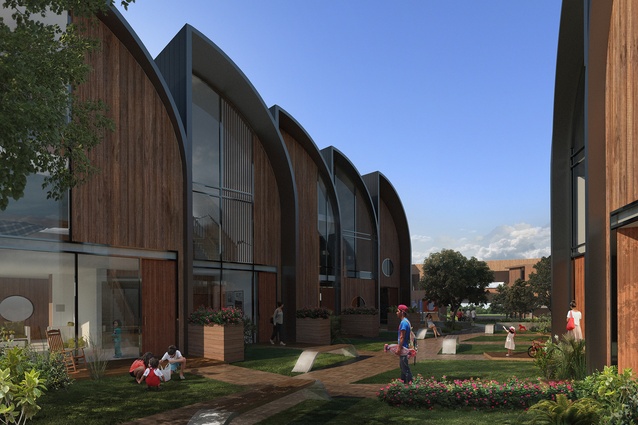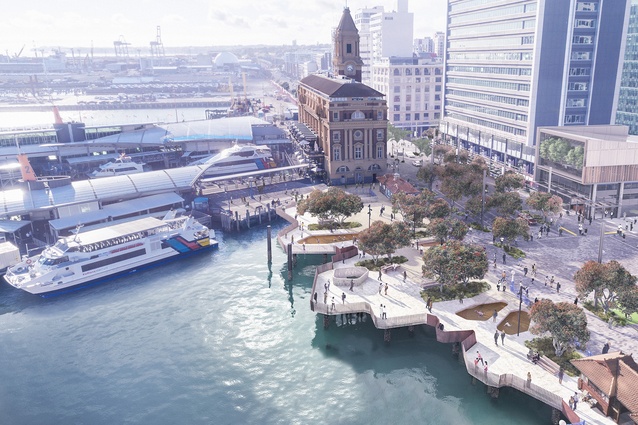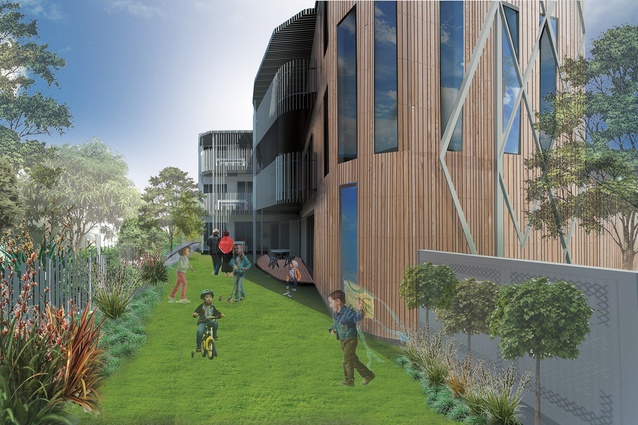Auckland Council updates its Māori Design Hub
With the population of Tāmaki Makaurau intensifying, the Auckland Council has updated Te Pokapū Whakatairanga Tikanga Māori (The Māori Design Hub) to continue refining its best practice model for Māori design.
“The Māori Design Hub upgrades and new resources bring fresh Māori design thinking, resources and exemplars that place Māori design and identity at the heart of our collective move from Auckland to Tāmaki Makaurau” says Phil Wihongi, Auckland Council’s Māori Design Leader, while Chair of the Planning Committee, councillor Chris Darby comments that “a thriving Māori identity is Auckland’s point of difference in the world. It’s crucial we work with Mana Whenua kanohi ki te kanohi to reflect our unique identity in our design processes and finished projects”.
Now containing design concepts on Papakāinga (housing and living on Māori land) and design solutions for Kāinga Hou (urban Māori housing on general title land), the Hub’s new entries are intended to further the development of housing which is both higher-density and affordable. Intended for Māori communities and agencies, as well as private and public developers and design educators, these are meant to offer culturally-specific alternatives to western models of housing.

Drawing on traditional forms of communal living, the Hub’s entries on Papakāinga include a case study of Kāinga Tuatahi, a medium-density development built by Ngāti Whātua Ōrākei that contains 30 whare, and the 19-member Turner whanau, who reside in an 8-bedroom house in Ngāruāwahia modelled on a vision for the future that came out of their collectively identified principles and values.
As for the Kāinga Hou concepts, Auckland Council worked with TOA Architects, with founder and director Nick Dalton remarking that “Kainga Hou innovatively and purposefully enables tikanga Māori in a very contextual way. It is significant as a contemporary instrument of design and encourages design practitioners to create spaces that are conducive to the ongoing sustainability of whanau, hapū and iwi lifestyles” when building is taking place on general title land.
Along with a seven-point matrix of values, principles and objectives that has been developed by subject matter experts and kaumātua, there are also several concept designs contained within Kāinga Hou, including for the Tuakana/Teina model, which modifies suburban sites into areas of intergenerational living that can house up to eight family units, along with Ukutoia terraced housing which transforms two existing state houses with three bedrooms into 14 new homes that comprise a total of 53 bedrooms. On a smaller scale, there are the Tuatahi and Tuarua in-fill designs, with the former turning an existing single-storey three-bedroom into a network of houses that can hold up to 16 permanent occupants, and the latter doubling the capacity of an existing three-bedroom suburban site by adding two single-storey projects to it.

Analysis of the Auckland Council’s own work has been added to the Hub as well, with the release of detailed reports on two elements of the Downtown Programme: Te Wānanga and the Quay Street Enhancements. Created with the input of downtown Tāmaki Makaurau’s Mana Whenua, both designs have been funded by the Council through their Long Term Plan and are scheduled for completion in the middle of 2021.
Te Wānanga, worked on by the Isthmus Group, is a public space that combines room for pedestrians with features that are intended to restore the ecological health of both land and sea. The Quay Street Enhancements were designed by LandLAB, and the project encompasses both a public space and a busy street in the Central Business District. It was worked on closely by Mana Whenua to create an area focused on the needs of pedestrians and cyclists. On top of all this, the Māori Design Hub has also seen the addition of information on complementary housing research, providers, policies and toolkits, which further the ongoing efforts by Auckland Council to develop a comprehensive best practice model for implementing Māori design practices in the contemporary era.
The Māori Design Hub is a specialty area within the Council’s Auckland Design Manual. Visit the Hub and see all the resources here.












